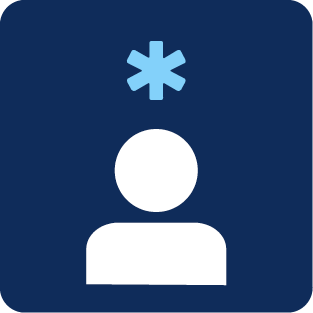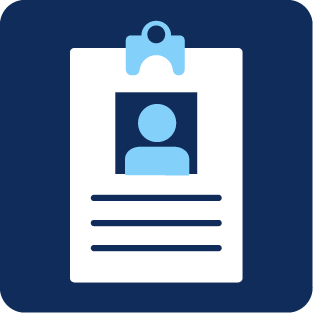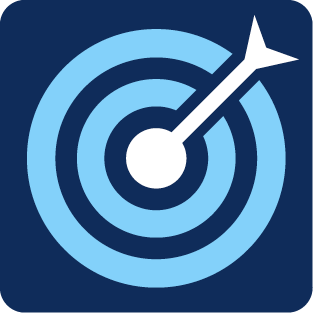The “marketing funnel” is a standard framework for many industries and higher education is no exception. While marketing campaign milestones and goals vary based on the advertised product, audiences evaluating a brand typically pass through these three main stages:
1. Awareness
2. Engagement
3. Conversion
In the higher education world, institutions must be thoughtful in designing marketing campaigns that specifically speak to the mindset of students (and other relevant stakeholders) at each of these stages in order to achieve their various enrollment and revenue goals.
Two Ocean, the marketing services division of MARKETview, is uniquely poised to effectively target students in each stage and address subsets of audiences based on advanced qualification standards. Using the proprietary MARKETview platform to identify right-fit students, our personalized, tailored journeys leverage first-party and heuristic data leading to higher engagement rates and better outcomes for our partners.
Let’s take a closer look at how Two Ocean strategically approaches each part of the funnel.
Awareness
For prospective students, the awareness stage is the entry point to gaining a basic understanding of an institution’s value proposition. Some schools enjoy the luxury of pervasive awareness based on name recognition and may not have to invest as many resources in this stage. For most, though, it is vital to convey the high-level benefits of a degree and generate initial interest among students exploring their institution.
It’s also important to understand the advantages of different platforms based on the nature of a student’s engagement. For the Awareness stage, we recommend leaning on social media platforms (e.g., YouTube and Meta) to meet students where they already spend time and when they are most open to consuming ‘push’ content. Many of our partners’ digital campaigns start here and see big results.

SUCCESS STORY
After running a brand lift study on the efficacy of their YouTube campaign, School A, a private college in the South looking to grow their class size saw a 26% lift in users’ ability to recall the institution’s ads and a 16% increase in their reported awareness of the school because of the campaigns.
At MARKETview and Two Ocean, we shepherd partners through this stage by first identifying key target audiences based on the partner’s specific goals, then translating this targeting into customized digital campaigns. Additionally, we pull strategic levers within the advertising platforms to reach prospects in our target demographic for whom we may not already have information to fully maximize the scope of awareness efforts.
Consideration
After students are aware of your institution, you must begin to engage them on a deeper level through the Consideration phase. At this point students may have narrowed their interest to a handful of schools and now is the time to tell your unique story and communicate the key qualities that set your institution apart.
What’s more, by segmenting audiences into strategic groups based on criteria such as stated interest (e.g., intended major) or by level of engagement with marketing to date (i.e., re-marketing), we can pair tailored content with each audience to keep them interested in your institution as they are evaluating their options.
In addition to building on Awareness channels, the ideal marketing mix would add on other channels at the Consideration stage to entice students to take action—such as responding to a content offer on Meta (Facebook/Instagram).

SUCCESS STORY
As a result of a compelling content offer on Meta, School B, a private college in the South looking to generate more highly qualified leads saw 40 form submissions from pre-senior students interested in the school in less than a month. Across our portfolio, we find that 93% of pre-senior students who submit digital forms are brand new inquiries. Therefore, these inquiries were incremental to the program and now this school can now incorporate these names into the rest of its marketing streams.
Two Ocean can take this a step further by tracking interactions with your brand as activities within your CRM, allowing you to build targeted, behavior-based campaigns in real time to encourage conversion activities.
Conversion
Within the funnel framework, we can think about Conversion as successfully enrolling a student. The most meaningful action a student can take digitally toward the enrollment process would be submitting a complete application. Within the context of digital campaigns, most of our effort is directed at getting students to apply.
When marketing to high school seniors, the best practice is to leverage ‘bottom’ of the funnel tactics where we can ‘pull’ in demand that has been created at earlier stages of the funnel. For example, running a Search Engine Marketing (SEM) ad on Google for a term like ‘Virginia Public College Application’ when your target audience is searching accordingly. Messaging on the ad and the landing page should be aligned and reflect where the student is in the college search journey. Communicating upcoming deadlines, offers such as promoting no application fees, and other incentives versus generic messaging will inspire a student to act more quickly.

SUCCESS STORY
School A, a private college in the South saw major success with Google SEM keywords relevant to its target audience (similar to the example above)—impressions and clicks were robust and users clicked through at a 16% click-through rate—much higher than most other channels, including email.
A major advantage of Two Ocean’s dynamic approach is the ability to make mid-cycle campaign pivots based on the actions of targeted student segments. For example, we can quickly align our digital efforts with other channels like print mailings sharing the same call-to-action to encourage right-fit students to take action as deadlines approach.
The Importance of Parents and Families
Students are not the only stakeholders in their college journey. Parents and families play a crucial part in supporting their high schoolers throughout their search, so including them in our digital advertising is vital. With appropriately tailored audience settings and relevant content, parents and families demonstrate an extremely valuable level of engagement with digital campaigns.

SUCCESS STORY
School B, a private college in the South’s parent campaign on Meta saw 7x the click-through-rate of that partner’s overall average versus the click-through-rate for student campaigns. Two Ocean recommends parents and families be incorporated into all marketing streams as a foundational element as resources permit.
Measuring the Success of a Campaign
Regarding measurement—you may wonder how to define success when it comes to campaign performance, especially within early stages of the funnel where the student may not immediately apply or generate engagement metrics. Comparing traffic metrics against portfolio and industry benchmarks can be helpful here, but it is also important to understand how these touchpoints factor into the complete journey from a student-first perspective. This involves many nuanced questions and sophisticated data analysis using institutional source-of-truth data (such as your CRM).
This is another area where Two Ocean partners enjoy a distinct advantage. We can match campaign performance and student journey data when it comes to judging advertising efficacy, due to MARKETview being at the foundation of every partnership.
If you’re interested in learning more about how your school could benefit from an adaptable digital marketing approach, informed by real-time market context, schedule a short conversation with us today.
